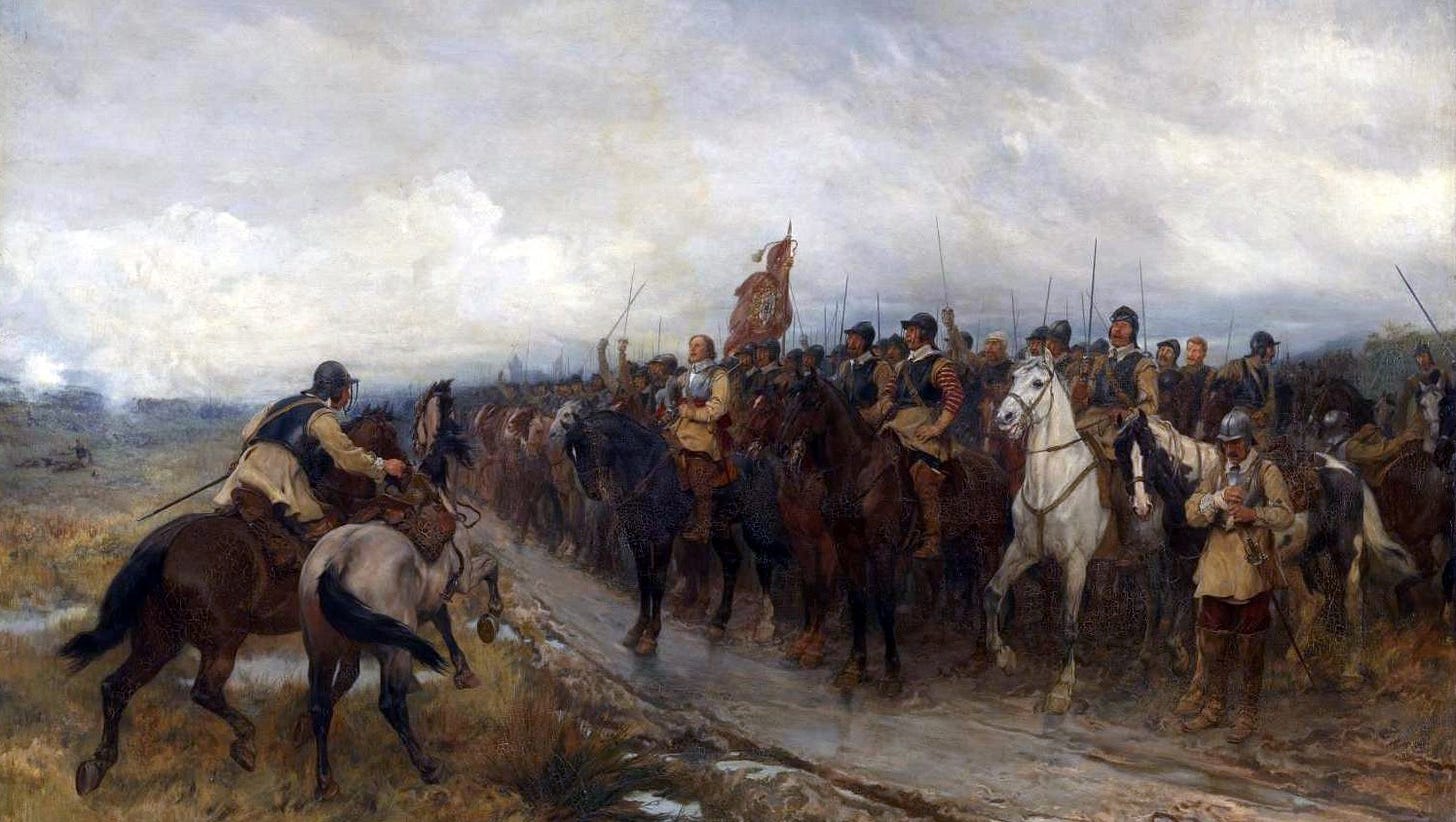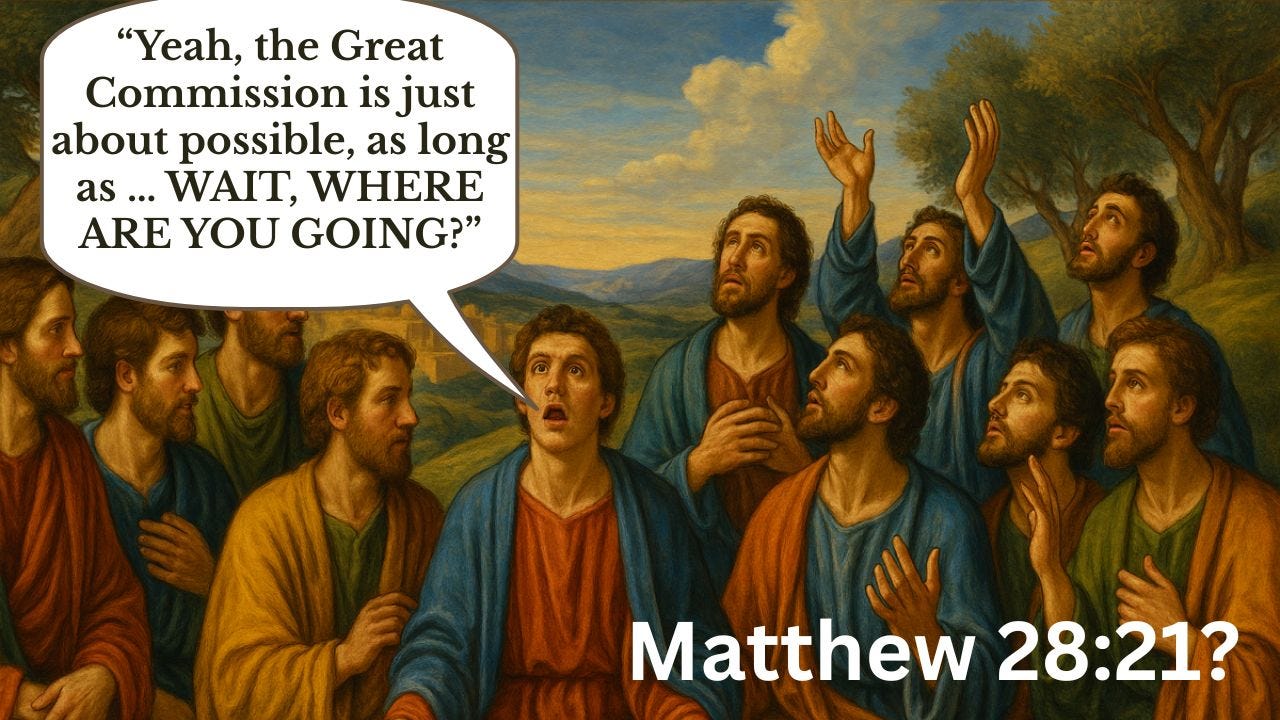This year, Ascension Day fell on 29th May. But that date used to be Royal Oak Day – also known as Oak Apple Day. It was an official day in the calendar of the Church of England for two hundred years. Turn to the end of the 1662 Book of Common Prayer and you find:
A FORM of PRAYER with THANKSGIVING to Almighty God, For having put an end to the Great Rebellion, by the Restitution of the King and Royal Family, and the Restoration of the Government after many Years interruption; which unspeakable Mercies were wonderfully completed upon the Twenty-ninth of May, in the Year 1660.
So, what is Royal Oak Day? And where did it go?
I’ve actually made a YouTube video about this. It takes us from St Nicholas’s Church in Sandford Orcas (seriously) to St Mary’s in Rimpton via The Monarch’s Way and an Oak Tree. It’s about twenty minutes long and I do hope you can find time to join me on the walk and watch it all the way through:
For now, read on:
What is Royal Oak Day?
The 29th May was formalized as a holiday by the English Parliament through the "Observance of 29th May Act 1660," to celebrate the return of King Charles the Second, who rode into London in triumph to reclaim his throne that day, which was also his thirtieth birthday.
‘In triumph’ is a phrase I kept reading in the literature on this subject. The fact is, there was no triumph. The Royalist forces had been defeated on the field of battle in the 1640s, decisively at Marston Moor in 1644 and then again in Naseby in 1645. King Charles the First had been captured, tried and executed. His son, Charles, went on the run. Attempts to rouse the Scots to defend their king failed when Cromwell defeated a numerically superior army at the battle of Dunbar on 3rd September 1650. Exactly one year later, another Royalists army was defeated by Cromwell at the Battle of Worcester.
After this battle, Charles masterfully and heroically hid in an oak tree. He then spent the night in a priest hole in a nearby house, which would be no surprise to a parliamentarian who would assume Charles the First’s son to be a papist. He then fled to the south coast along a path that is now known as ‘The Monarch’s Way’. Of course, he wasn’t technically monarch of England at the time, although he was still technically King of Scotland. Either way, he found a boat in Shoreham and fled to France.
You can probably tell that I don’t think very highly of Charles the Second. Some would say he was a welcome antidote to the seriousness of the puritanical parliamentarians. I’m more inclined to see him as a sexually incontinent liar. He gave the impression of being the life and soul of the party – but he was manipulative and privately vengeful. And may have become a Roman Catholic on his deathbed which the Head of the Church of England really is not supposed to do. Yet, this anointed King was God’s chosen instrument to restore the Church of England to its place in English society.
The Triumphal Entry
Did Charles arrive ‘in triumph’? Or did he just live long enough to see Parliament fail to manage its victory? Having executed Charles the First, ironically a man of much greater personal godliness and fidelity than his son, Parliament found England, Wales and Ireland impossible to govern. The whole system that had evolved over the centuries was predicated on the existence of a king. They were left asking the question that Tigger asked when he realised he couldn’t find anything to have for breakfast: “What happens now?”
England slid into a kind of military dictatorship. Cromwell was appointed Lord Protector of the Commonwealth.
The Joni Mitchell Effect
Meanwhile, the Church of England had been dismantled. This is something I would like to investigate further. What happened in those churches on Sundays in the 1650s? What did services look like? I suspect many carried on as normal. After all, the churches were not pulled down and sold off, as had been the case when the monasteries had been dissolved. Dissenters were free to form their own churches, or assemblies. I would imagine some simply stayed home.
Perhaps England experienced the ‘Joni Mitchell effect’ in that “You don’t know what you’ve got ‘til it’s gone.” The Church of England that had been assumed for centuries, that had reached some kind of settled equilibrium by the 1620s, was taken away. And the people wanted it back. But I have read no reports of significant riots, uprisings or rebellions that threatened the regime.
Blame the English Weather?
Whilst there had been good harvests in the early 1650s, they were all bad in second half of the decade. When Cromwell died, there was a constitutional vacuum, into which a flamboyant king was all too happy to ride, bearing the name of his father who didn’t seem quite so hopeless or tyrannical eleven years on. In fact, the Church of England was also told to celebrate “Charles the Martyr”:
upon the Thirtieth Day of January, being the Day of the Martyrdom of the Blessed… to implore the Mercy of God, that neither the Guilt of that sacred and innocent Blood, nor those other sins, by which God was provoked to deliver up both us and our King into the hands of cruel and unreasonable men, may at any time hereafter be visited upon us, or our posterity.
In short: we executed the King’s father. Soz. Although, to be fair, it wasn’t us Anglicans, but the dissenters who were “the cruel and unreasonable men”.
Likewise, there were prayers and collects for Royal Oak Day, named after King Charles’s escapades in the tree after the Battle of Worcester. They say history is written by the winners; that goes for church history and the Book of Common Prayer too.
It didn’t bring a better harvest. In 1661, following Charles II’s triumphant restoration, England suffered one of the worst harvests in a century. Although things improved. According to WG Hoskins, “from 1665 to 1672 inclusive, there were no fewer than seven good harvests out of eight, a bounty perhaps unprecedented in English history.”
It is interesting that Charles the First, who desperately wanted peace, beauty and order in his kingdom, should plunge his kingdoms into civil war, destroying the Church of England. And it was his feckless dissolute son who should be the one lauded by his people as the great unifier (even though there are credible rumours that Charles the Second defected to Rome on his deathbed.)
But the Church of England was reborn, giving us one of the most influential books whose words shaped a language and a nation: The 1662 Book of Common Prayer.
This foundational prayer book is still in use today, remaining authorised in the Church of England. The book has, therefore, outlasted Royal Oak Day which was formally abolished in 1859 under the Anniversary Days Observance Act. Churches were no longer required to sing praises to either Charles, or celebrate the “happy deliverance of James the First and the three estates of England for the most traitorous and bloody intended massacre by gunpowder” on 5th November.
English unity could never be based around flawed kings and thwarted attempts at terrorism. The Book of Common Prayer and the seasons, holy days and red letter days run deeper and last longer than a few life spans. In fact, what would be a better metaphor? How about a humble oak tree?
Did you enjoy that? Plenty more where that came from? Why not subscribe?
And have you see The Wycliffe Papers yet? There’s even a topical joke about the Ascension, albeit it 2000 years late:
I also made a video about last week’s commemoration of St Aldhelm, which has a special appearance from a blue plaque from a legendary modern scientist:







